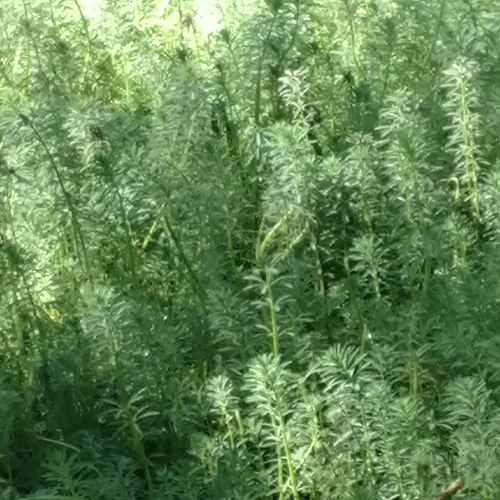Parrot Feather emergent pond plant
Myriophyllum aquaticum is a rooted aquatic plant. It produces branching stems that are brownish red to green. Parrotfeather gets its name from the feathery bright green leaves that grow from the stems. Although this is a submerged plant, parts of the plant can grow up to 12 inches out of water.
Parrotfeather and eurasian watermilfoil are often misidentified as one another. Both are members of the same plant family. Eurasian watermilfoil grows only below the water surface, whereas the parrot feather produces emergent stems.


Where does parrot's feather grow
Parrotfeather can be found in lakes, ponds and streams. While this weed is found throughout the United States it is not a native plant species. This weed spreads through fragmentation.
Is parrot feather an invasive species
Dense mats that form at the surface outcompete desirable aquatic plants. Growth also reduce recreational usage and clog drains and streams. Parrotfeather weed creates an ideal habitat for mosquito larvae to hatch and increase mosquito populations.
Parrot feather herbicide options:
Aquathol K and Aquathol Super K provide excellent control of parrot feather. This treatment yields quick results. There are no water use restrictions after use.
Harvester provides fast control solution. To improve results mix with Cutrine (1 qt Harvester, 1 gal Cutrine). This is a contact herbicide. Must come in contact in order to kill.
Sonar provides a long term management solution for parrot feather. Sonar reacts slowly, taking 30-60 days for results. The entire pond must be treated with Sonar for success. This treatment option is only for ponds with little or no flow coming into the pond. Sonar AS, and Sonar RTU are available options.
Parrotfeather Control
Next Steps After Herbicide Treatment
Once parrot feather has been sprayed, take these proactive steps to keep the pond clean and weed free. Apply pond dye to reduce sunlight from reaching the bottom of the pond where new growth begins. Use pond dye monthly for best results. Use Muck Remover pellets to break down decaying parrotfeather and other muck in the pond.
Need help identifying your POND WEED or How Much Treatment To Use?
Click Here To Submit Your Pond Help Request
